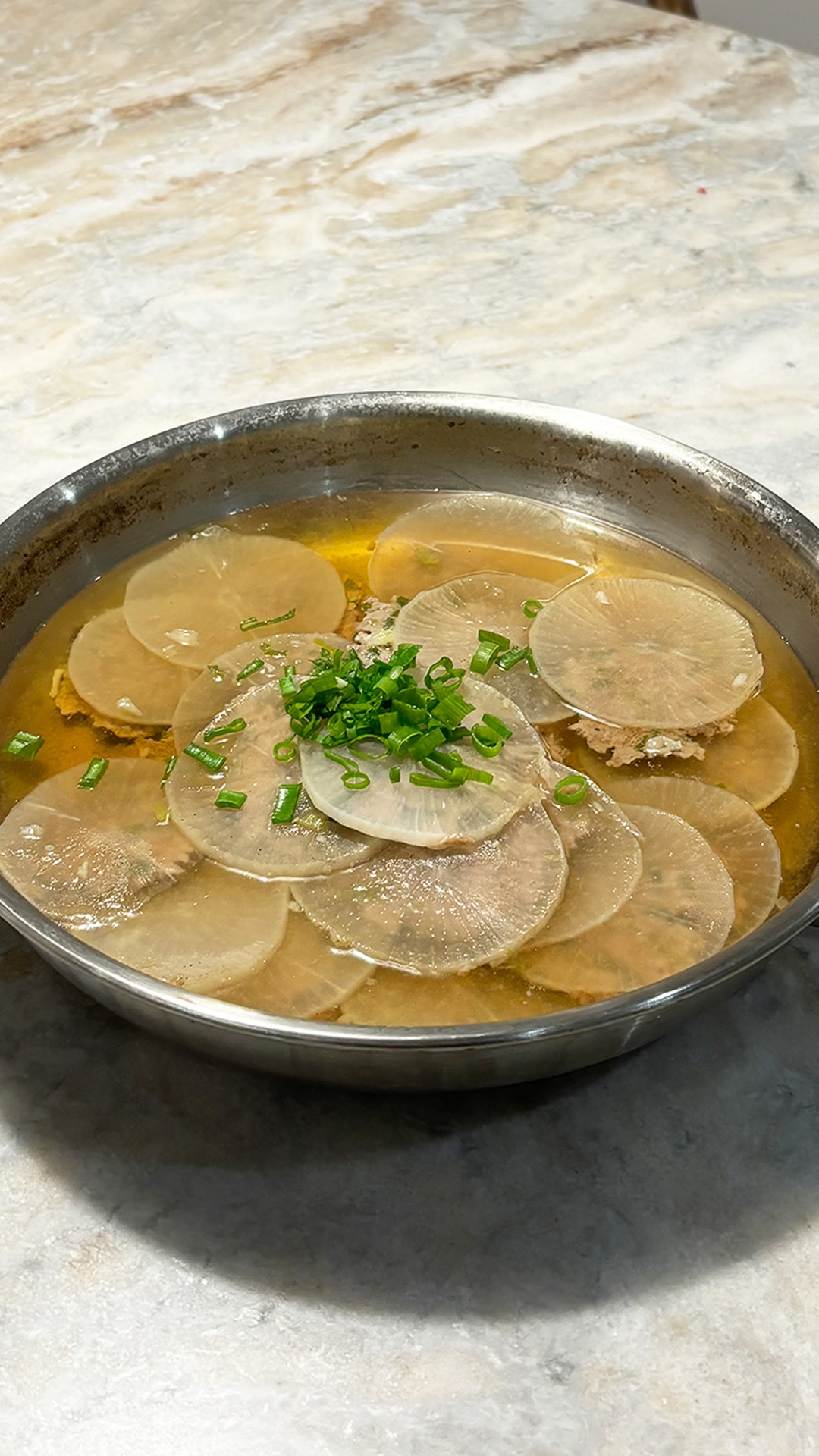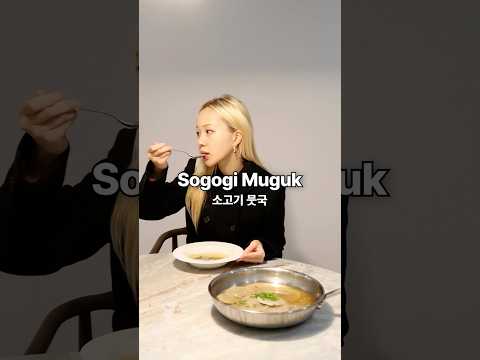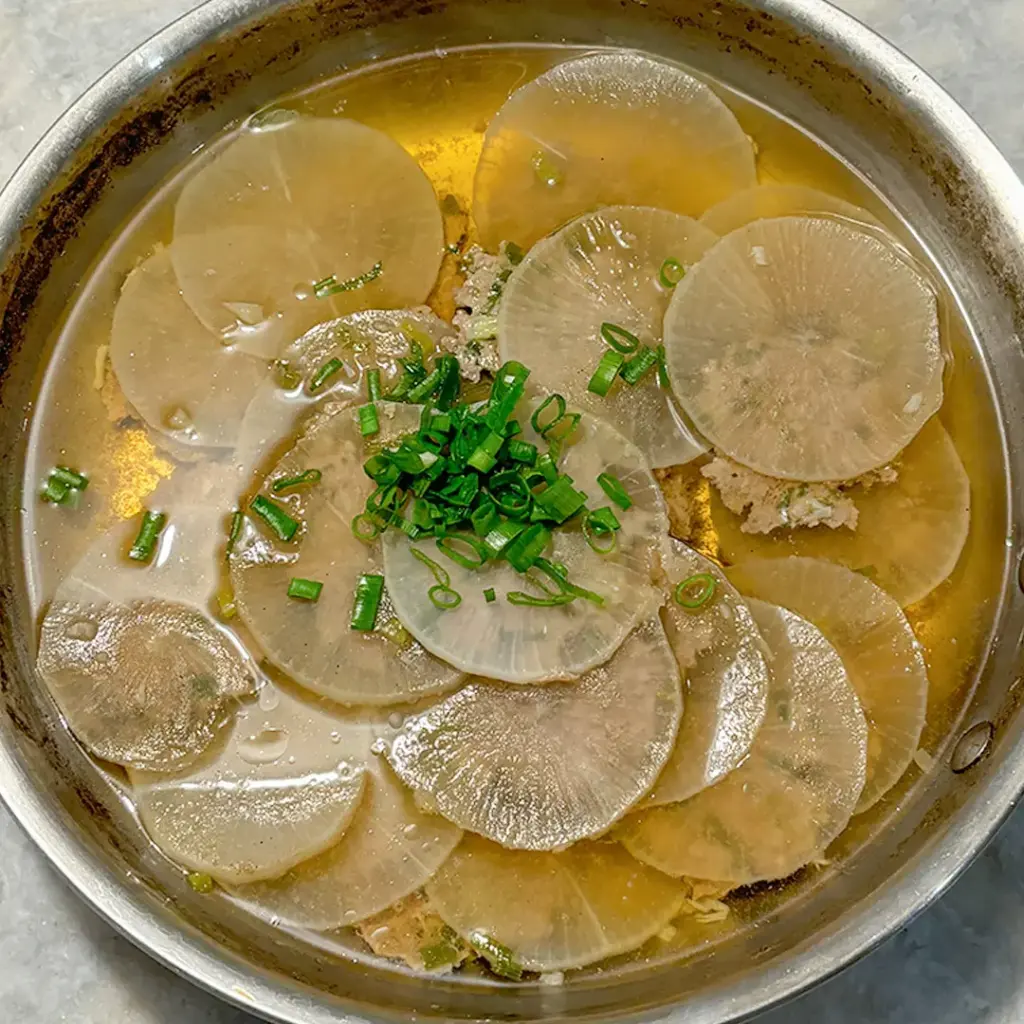
Home Korean Soup “Guk, Not Jjigae”.
Korea has a deeply developed soup culture. There are many different types of soup, including Guk, Jjigae, Tang, Jjim, and Jeongol. Today, we’ll explore the richness of Korea’s soup culture and introduce you to 10 Home Style Korean soup that are easy to make.
Table of Contents
Why is the Korea Soup Culture so Rich?
Natural Environment
Korea’s four distinct seasons, including cold winters, make warm soups a perfect way to warm the body and provide energy. Moreover, rice farming – the backbone of Korean agriculture – naturally pairs well with Korean soups as a complement to steamed rice.
Diverse Ingredients
With easy access to seafood, meat, and vegetables, Korea’s geographical diversity allowed a wide variety of soup to flourish.
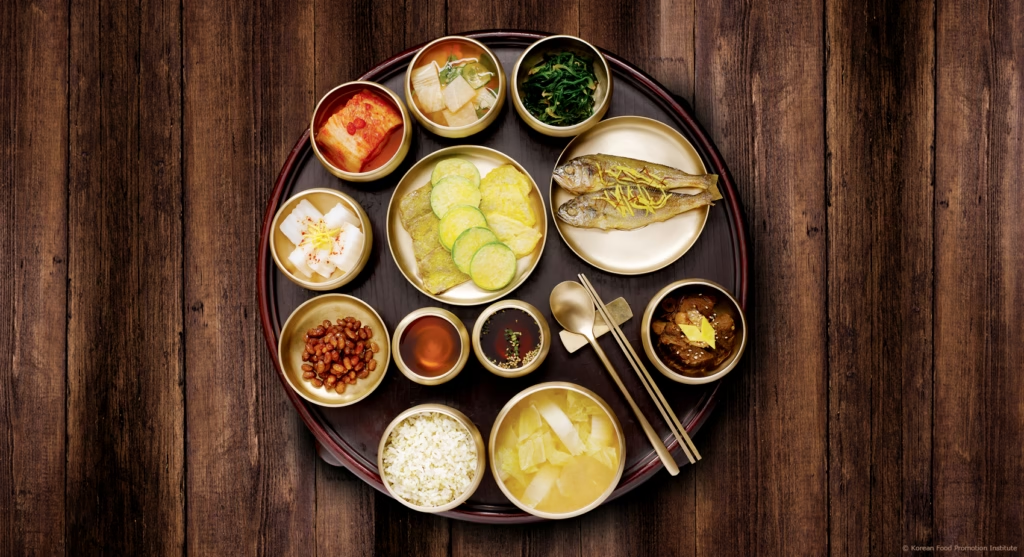
Community Oriented Culture
Traditional Korean society emphasized strong family and community ties. As a result, sharing a pot of soup fostered togetherness and strengthened bonds over meals.
Harmonize With Fermented Foods
Korea’s famous fermented foods, such as Doenjang (soybean paste), Gochujang (red pepper paste), soy sauce, and Kimchi, serve as flavor enhancers in Korean soup, creating deep and complex flavors.
What Is Guk? How Does It Differ from Jjigae, Tang, and Jeongol?
Guk (국)
Typically has more broth than solid ingredients, making it ideal as a side dish with rice.
Jjigae (찌개)
Has less broth and is more intensely flavored, often served as a main dish.
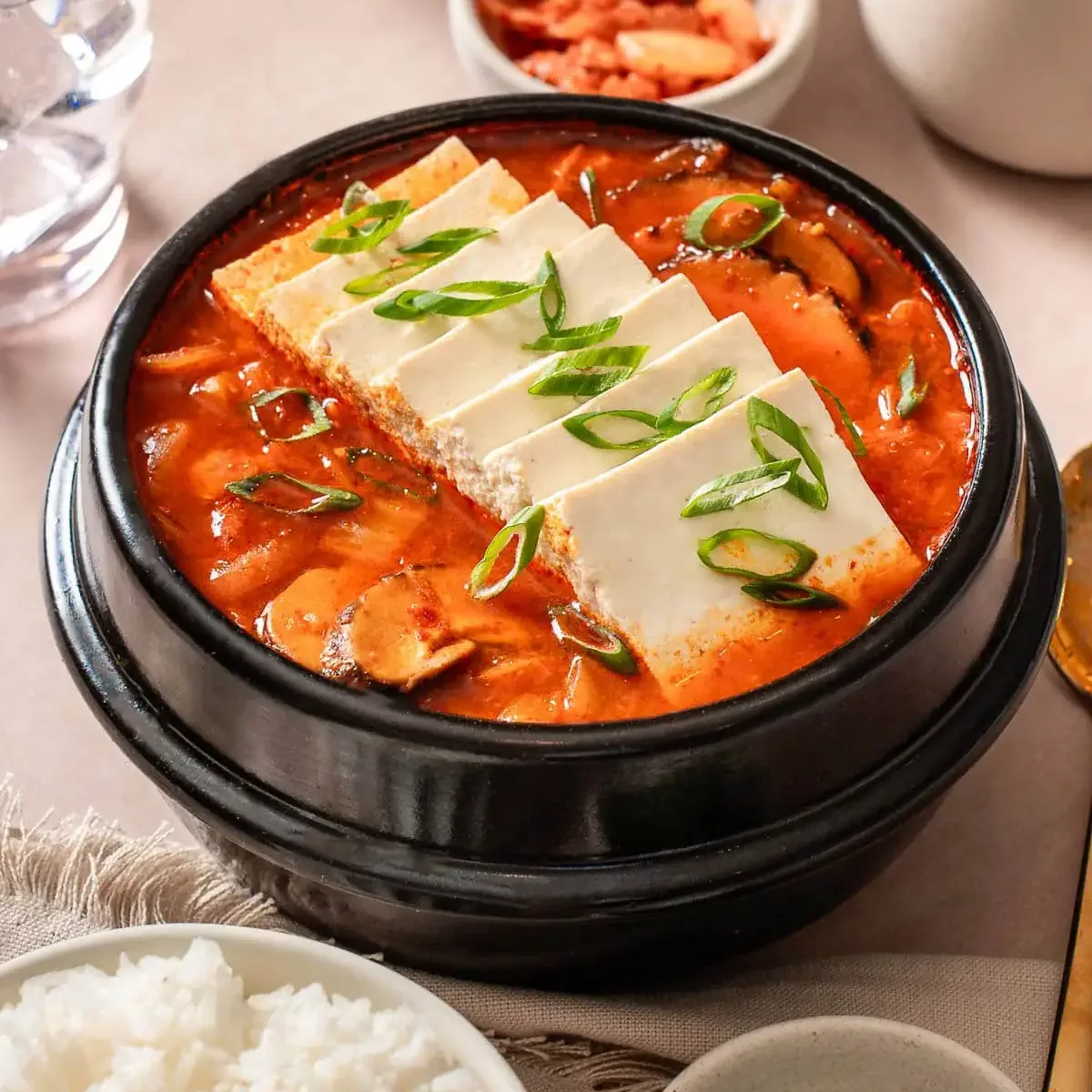
Tang (탕)
Falls between Guk and Jjigae, with a balanced ratio of broth and ingredients.
Jeongol (전골)
A communal hotpot where the ingredients are cooked at the table and shared.
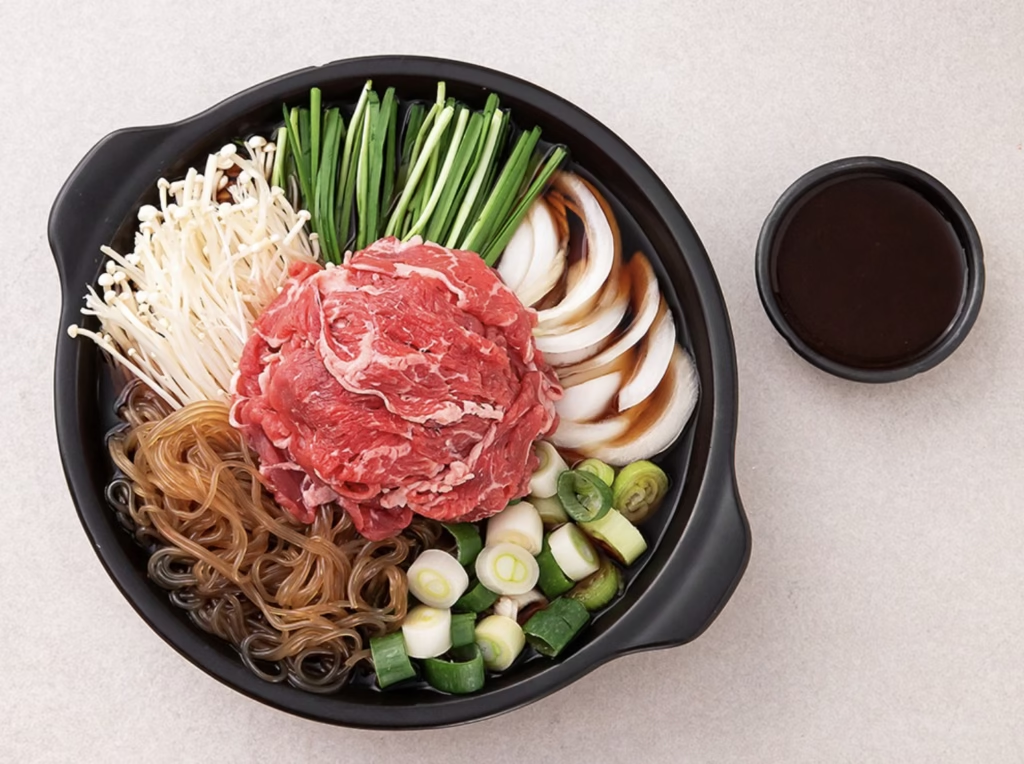
The Role of Korean Soup in Daily Life
Morning Soup Tradition
A traditional Korean breakfast often includes a warm bowl of soup with rice. In addition, it’s an easy way to start the day, providing warmth and nourishment.
Special Occasion Korean Soup
- Seaweed Soup (Miyeokguk) for Birthdays: Symbolizes health and gratitude, as it is traditionally given to new mothers.
- Korean Rice Cake Soup (Tteokguk) for Lunar New Year: Represents a new beginning for the year. A fun tradition is for children to eat a bowl to “grow” a year older.
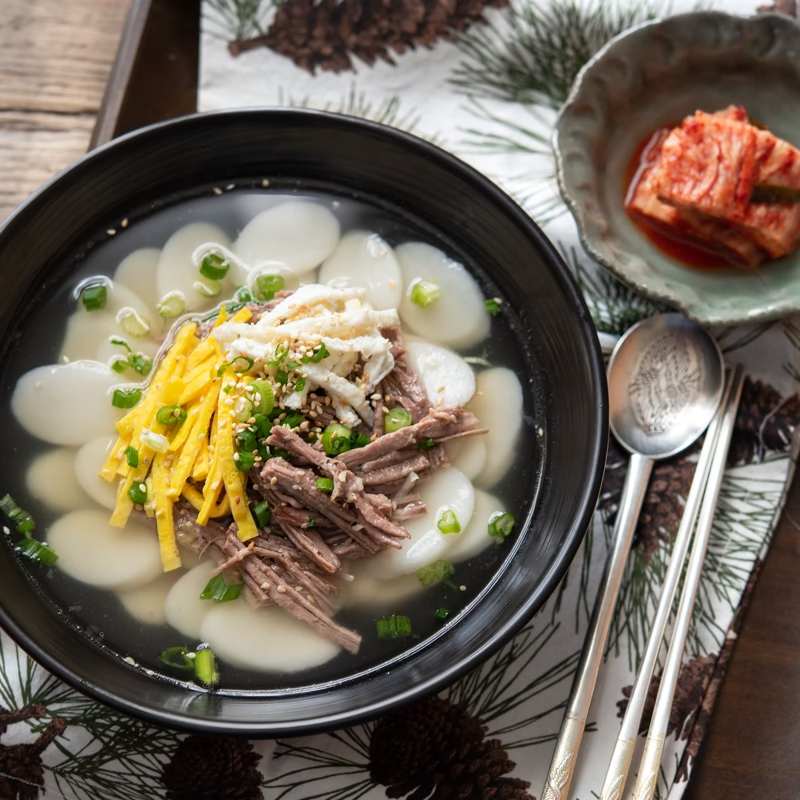
Korean Soup Recipes For Health
- Samgyetang (Ginseng Chicken Soup) in Summer: Eaten during the hottest days to restore energy (iyeol chiyeol – “fight heat with heat”).
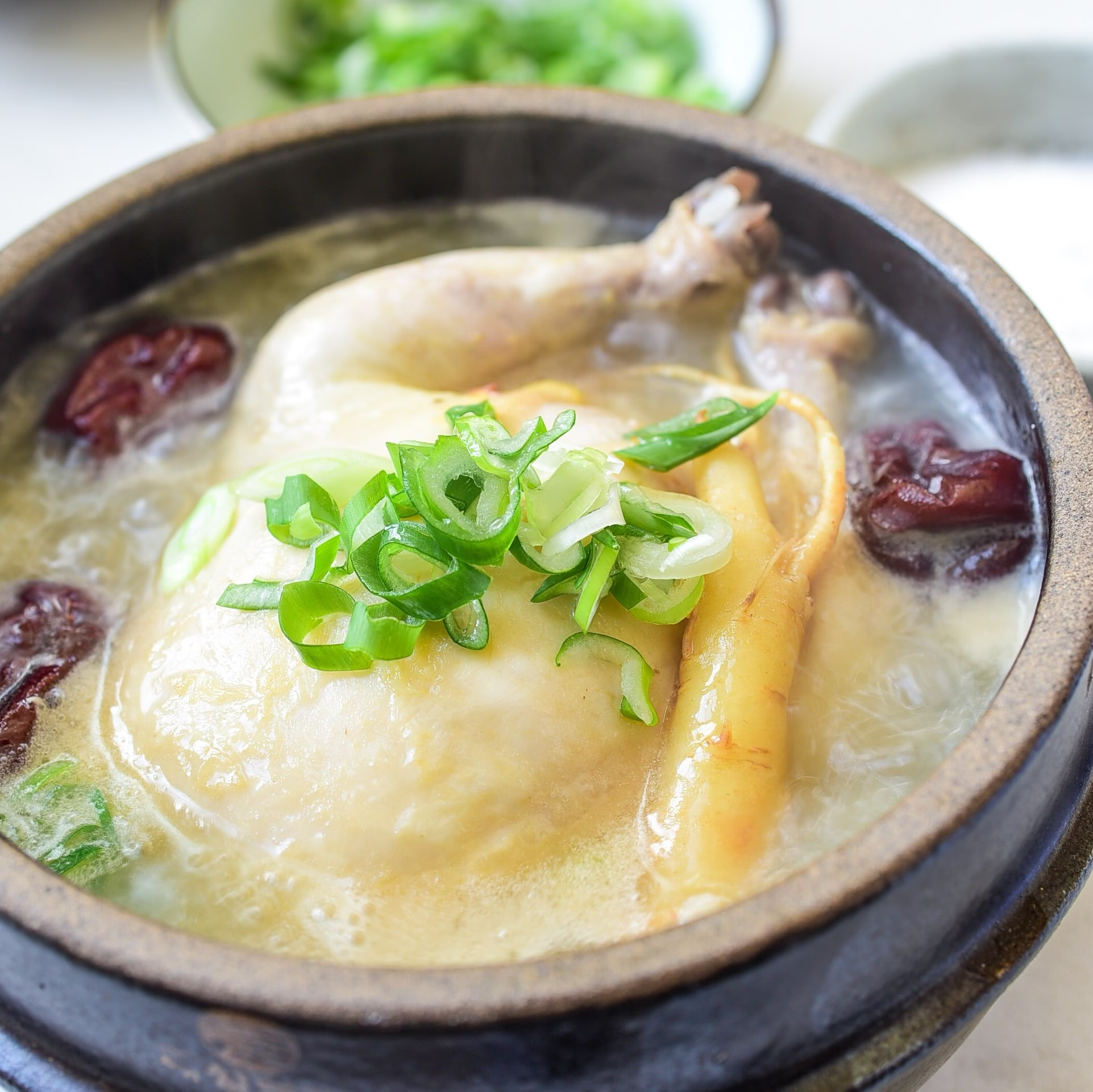
- Bone Broth (Sagolguk): Often consumed for bone recovery or general health due to its calcium and collagen content.
- Hangover Soup (Haejangguk): A soothing remedy for the morning after.
Top 10 Home Style Korean Soup
Here are 10 Home Style Korean Soup Recipes that Koreans often cook and enjoy at home.
1. Doenjang Guk (soybean paste soup) 된장국
Doenjang guk can change its flavor infinitely depending on what ingredients are added. For example, the two most common types of doenjang guk on the Korean table are Spinach doenjang guk and napa Cabbage doenjang guk.
- Spinach Doenjang Guk (시금치 된장국): A doenjang soup made with spinach and tofu, often eaten for breakfast.
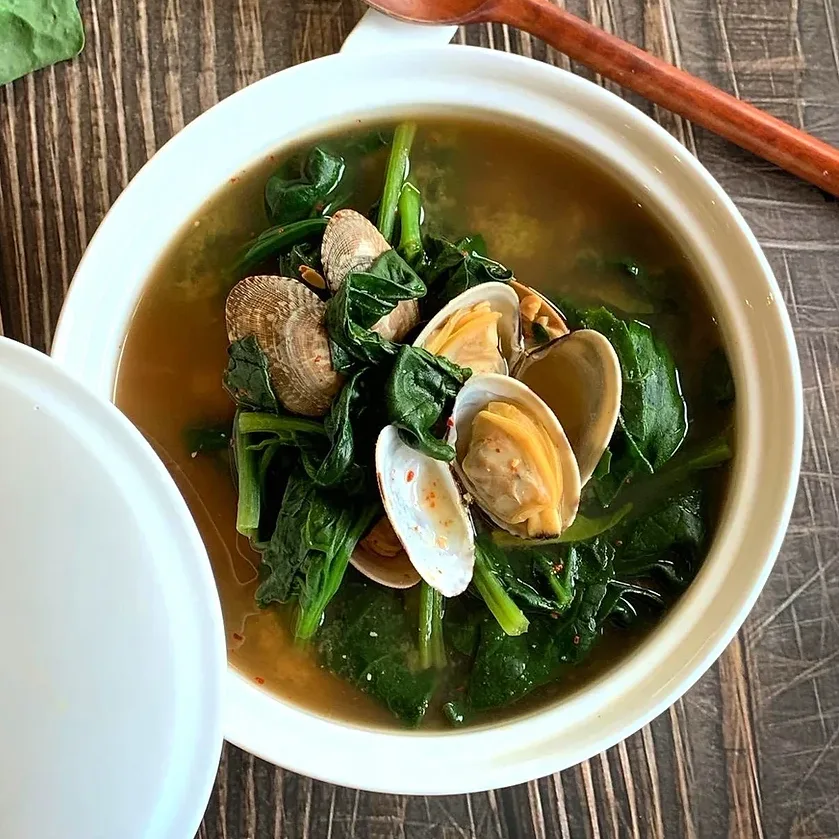
- Napa cabbage Doenjang Guk (배추 된장국): A doenjang soup made with Napa cabbage. In addition, the flavor of the cabbage seeps into the broth, giving doenjang duk a deep and rich flavor.
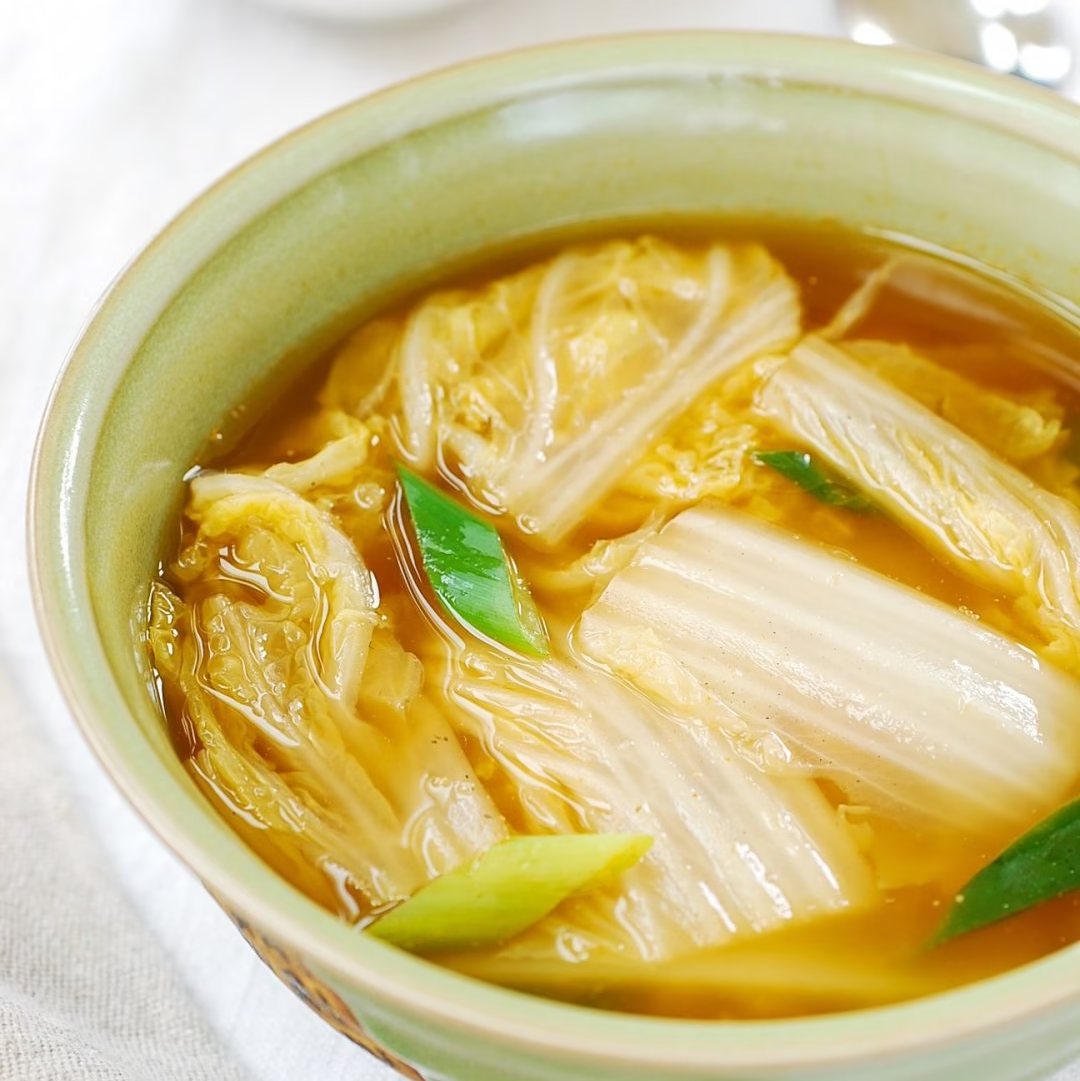
2. Gyeran Guk (egg soup) 계란국
This soup is the easiest of the 10 Home Style Korean Soup. If you don’t have many ingredients in your refrigerator, don’t worry. You can make a warm and delicious soup with just eggs.
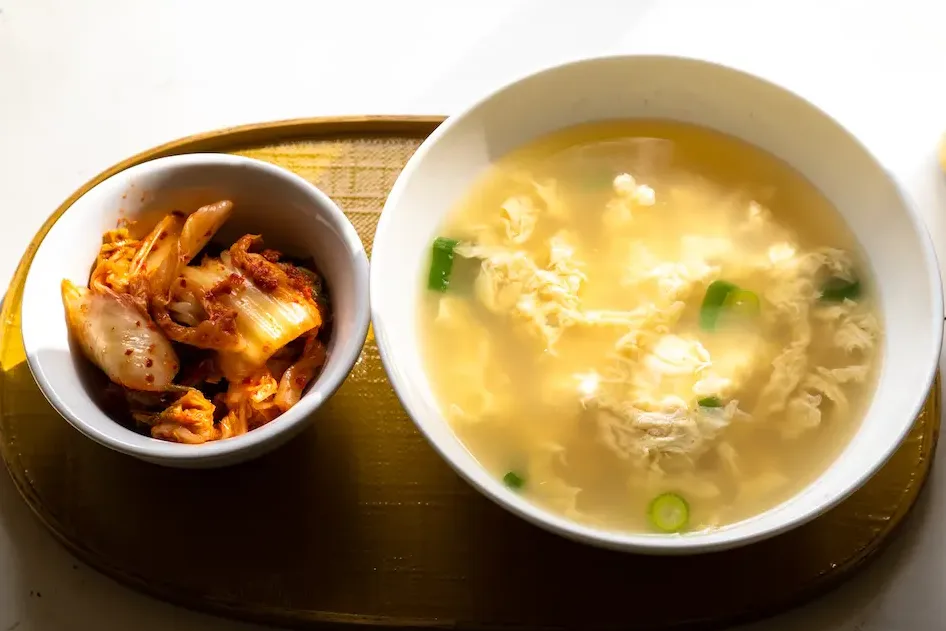
3. Gamja Guk (potato soup) 감자국
Usually made with eggs as a protein supplement. The fluffy texture of the potatoes makes this soup very tasty. It’s often made plain and eaten for breakfast.
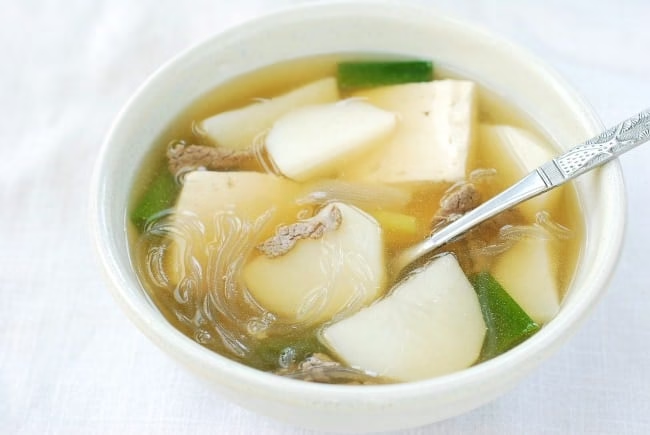
4. Mu Guk (radish soup) 뭇국
Koreans often eat muguk in the fall and winter. Radishes are sweet and nutritious during these seasons, so there are many radish-based dishes during this time. For example, the two most representative types of muguk are beef muguk and squid muguk.
- Beef Muguk (소고기 뭇국): When you think of muguk, the first thing that comes to mind is beef muguk. The deep and savory broth of the beef, combined with the natural sweetness of the radish, creates a harmony that is perfect to start your day. You can also make a spicy version of this as Korean Spicy Beef Soup.
- My Beef Muguk (sogogi muguk) recipe is easy to make without frying or blanching the meat. It tastes like galbitang (beef rib soup) and is really delicious. The cooking time is shorter than the traditional method, and because it uses ingredients that are easy to find abroad, it means that people outside of Korea can easily enjoy authentic Korean flavors. Click on the image to view the recipe.
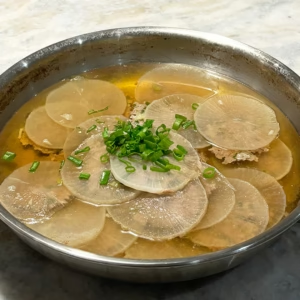
- Squid Muguk (오징어 뭇국): Squid muguk is spicy Korean soup. It is commonly eaten in the Gyeongsang-do area, which is famous for its abundance of seafood and love of spicy flavors, and it’s usually made spicy. The combination of seafood and radish creates an umami flavor that will blow you away. As a result, this dish may be new to foreigners.
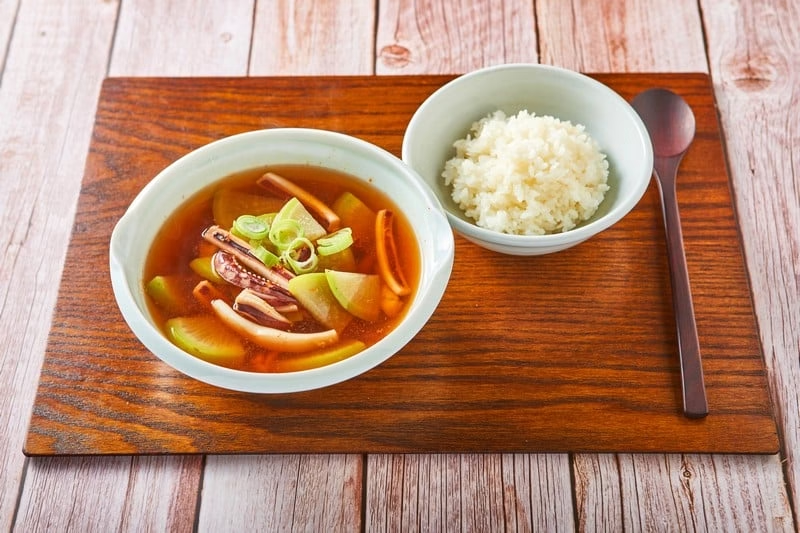
5. Miyeok Guk (seaweed soup) 미역국
Miyeokguk is one of the most iconic soup in Korea. Koreans love it so much that it’s often eaten for breakfast and a large pot is made to be eaten for several days. The longer it is cooked, the richer the flavor.
- Beef Miyeokguk (소고기 미역국): A bowl of beef miyeokguk with rice and a slice of kimchi is the essence of Korean comfort foodIn. In fact, “10 Korean Home-style Soups”, beef seaweed soup (sogogi miyeokguk) is likely to top the list.
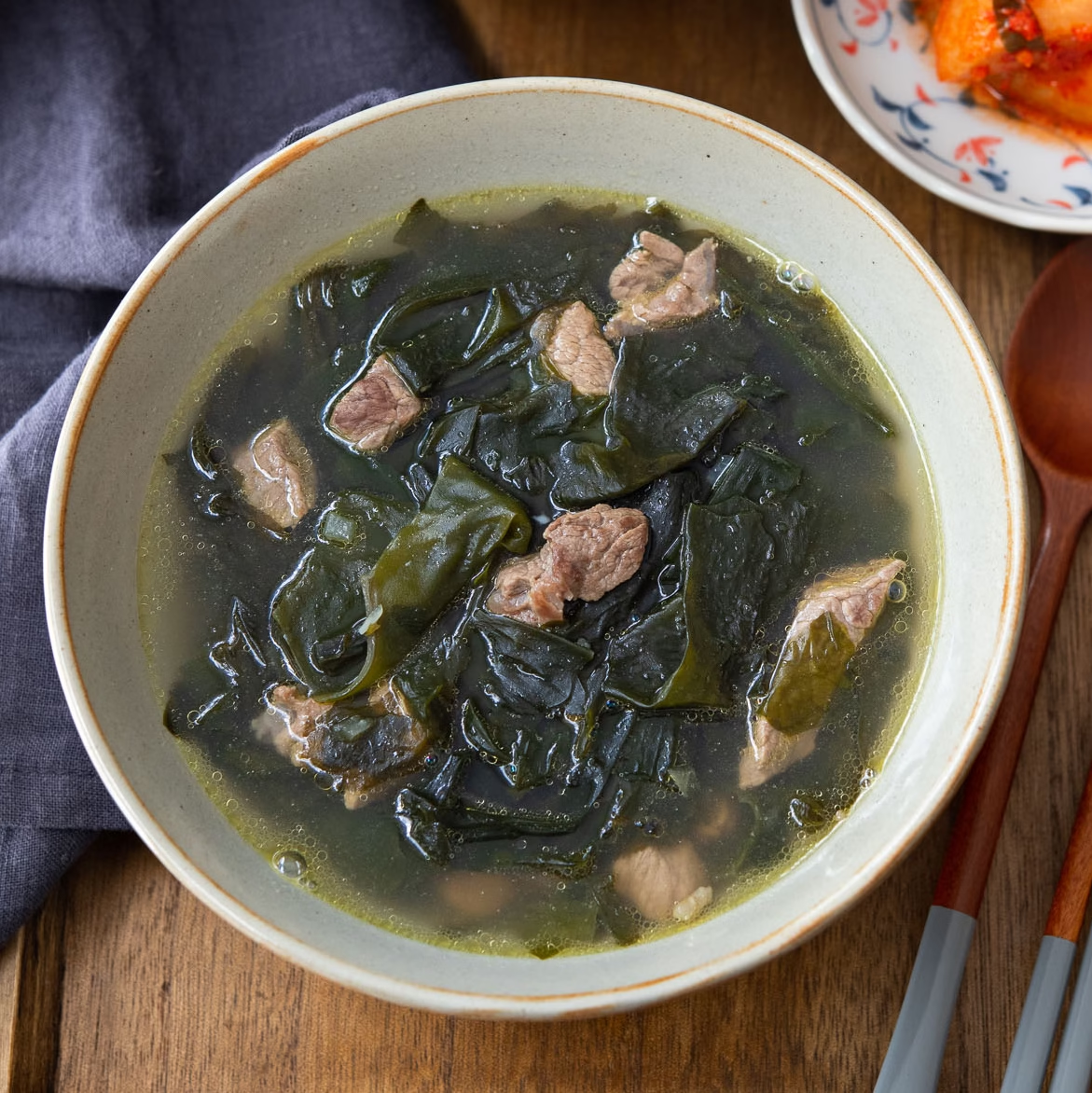
- Mussel Miyeokguk (홍합 미역국): Mussels are great for making broth, and when combined with miyeok, it brings out a deep ocean flavor. In contrast, unlike beef miyeokguk, it’s lighter and you can enjoy a clean tasting seaweed soup.
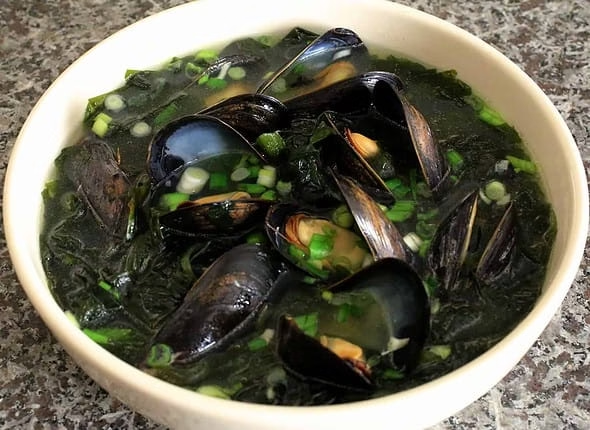
- Mussel Seaweed Cream Soup: This recipe was inspired by Chef Choi Hyun-seok’s Chef miyeokguk soup. Since mussels are famous in Belgium, I substituted them for flounder, and to make it more accessible to foreigners trying miyeokguk for the first time, I added cream to create a creamy soup. As a result, this fusion-style soup made by mixing miyeokguk, mussels and cream is perfect as an appetizer for holidays or special occasions. Your guests will surely praise it! Click on the image to view the recipe.
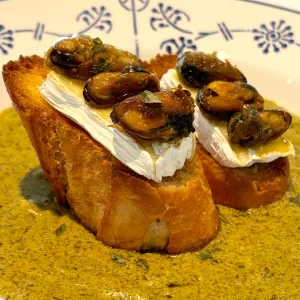
6. Eomuk Guk (fish cake soup) 어묵국
Unlike eomuk tang(어묵탕), where the fish cakes are boiled, eomukguk(어묵국) is made by cutting the fish cakes into bite-sized pieces. As a result, it’s a dish that’s especially comforting in the winter. Eomukguk naturally creates a delicious broth from the seafood flavor in the fish cakes themselves. In addition, it’s common to add radish and kelp to enhance the depth of the broth. As a result, the soup becomes even more flavorful.
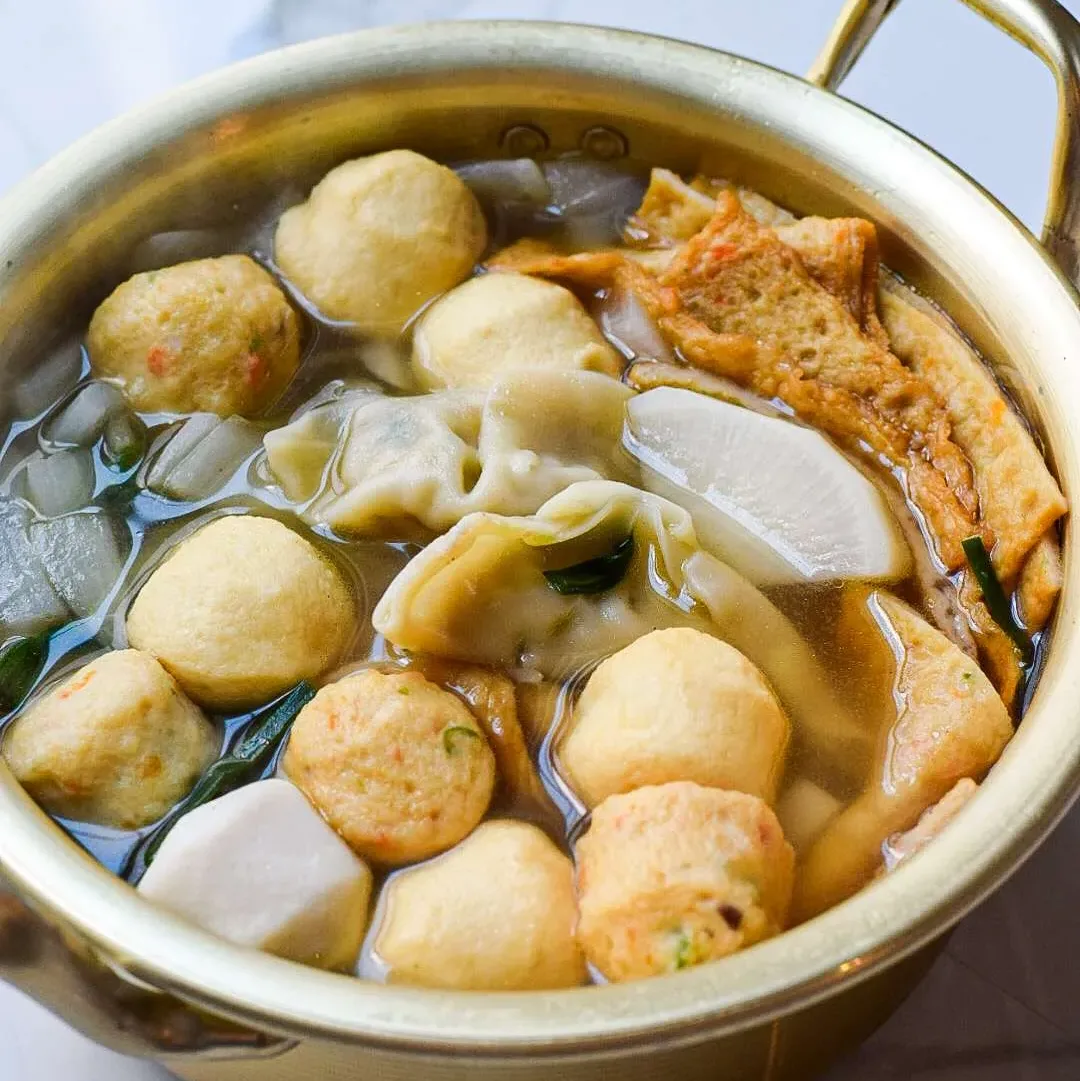
7. Kongnamul Guk (bean sprout soup) 콩나물국
Kongnamulguk(Korean bean sprout soup) is often eaten for breakfast because it’s simple, quick, and easy to prepare. It’s also often served with rice and is a popular hangover soup. This is because bean sprouts are rich in asparagine, vitamin B1, and vitamin C, which are effective in relieving hangovers.
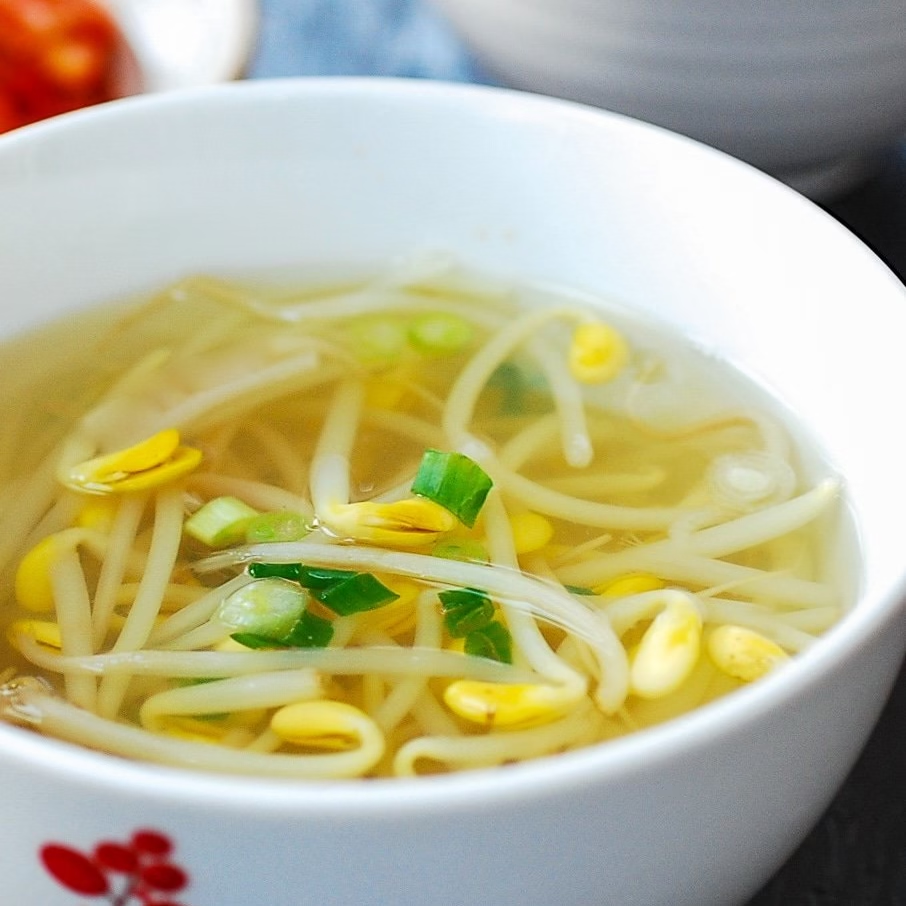
8. Kimchi Guk 김칫국
A Korean soup made with kimchi. Even without any special ingredients, kimchi juice and cabbage make a flavourful broth. It’s usually served as kimchi kongnamulguk with bean sprouts added. My mother, for example, usually adds anchovies to make the broth extra clear. As a result, this is one of the soups my family often eats.
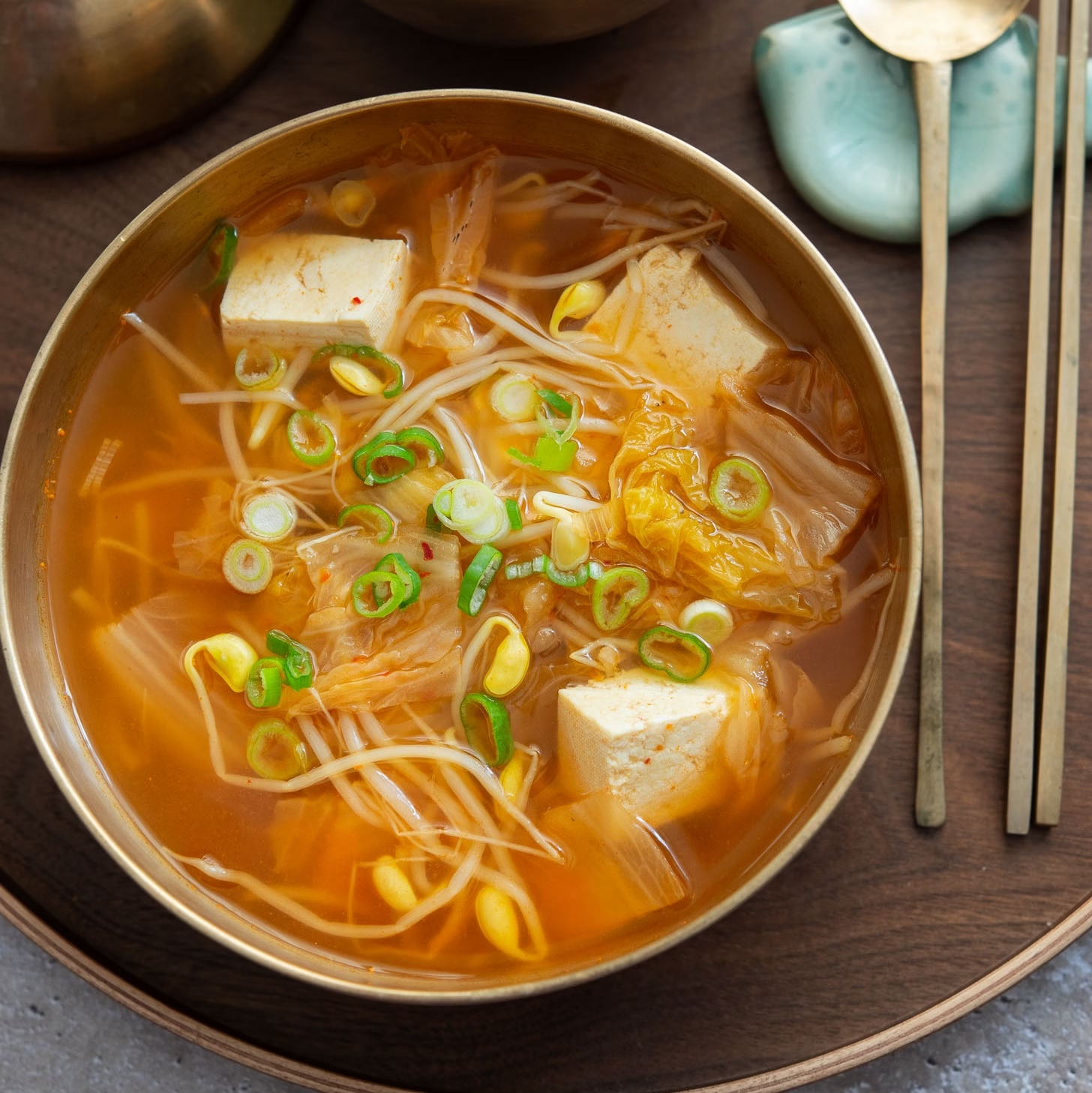
9. Bogeo Guk (Dried Pollock Soup) 북엇국
When dried pollock and eggs are added, the result is a white broth. Furthermore, adding radish or bean sprouts makes the taste much more refreshing. It’s often eaten as a hangover remedy the morning after drinking.
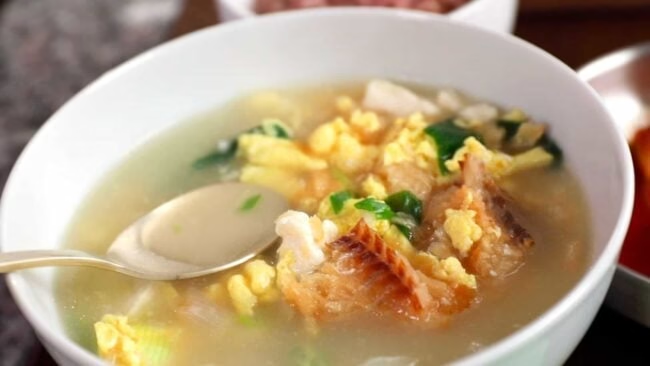
10. Sagol Guk (Korean beef bone broth) 사골국
This is a broth made by boiling beef bones for over 10 hours. As a result, the long boiling process releases calcium and collagen from the bones, making the flavor deep and the broth white. Because it’s rich in calcium, it’s often consumed when someone has a bone fracture.
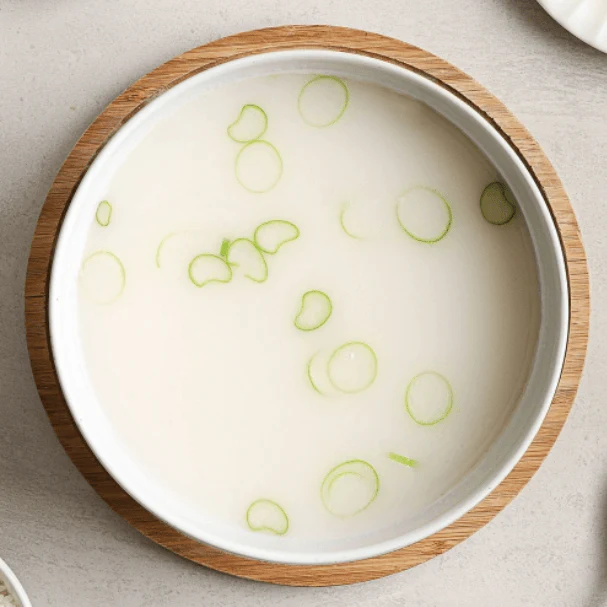
Sagolguk is usually seasoned with salt and pepper and served with rice, but Koreans also use this broth as a base for other dishes such as Budae Jjigae (army stew), Tteokguk (rice cake soup), or Mandu Guk (dumpling soup), which makes the soup richer and more flavorful. However, it takes a long time to make, so in Korea you can easily buy Sagolguk packaged in stores.
What Is Soup To Koreans?
While in Europe soups and stews are often eaten in winter, Koreans eat soup almost every day. Whether it’s for breakfast, a soothing hangover cure or a celebratory meal, Korean soup is woven into the fabric of Korean life.
Of the 10 Home Korean Soup I shared with you today, which is your favourite? For me, it’s the seaweed soup that my mother used to make that I crave the most. So, would you like to try making a warm bowl of Korean Guk at home today?
